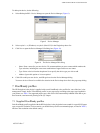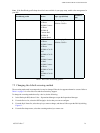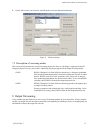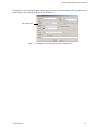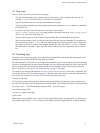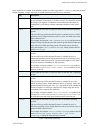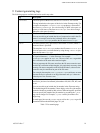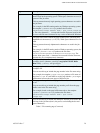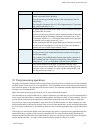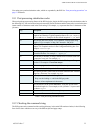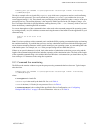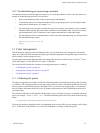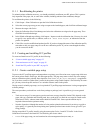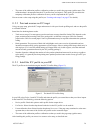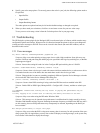
USER GUIDE FOR HP 6 COLOR PLUGIN
AG50324 Rev. 7 21
10 Post processing operations
The plugin Configuration dialog box has an Output: Post Processing text box in which you can enter commands
and their options, in the same way as a command line. These commands are carried out after the page buffer has
been sent to the printer or once the output file has been created. The commands available depend on the platform
on which you are running the RIP.
Note: You cannot perform post processing if you are using a Macintosh computer.
The command can be a simple batch file or a complex application, provided that you give the command all nec-
essary options and information; a command needing operator intervention is likely to cause problems. You can
specify options understood by the application, and data such as the path of the relevant input or output files.
You can use post processing commands to convert the file to a different format or to send somebody an e-mail
notifying them that a job has been processed. There are several other possibilities, such as extracting information
for use in reports, limited only by your ability to obtain or create a suitable application and to supply information
to it.
If the string you enter into the Output: Post Processing text box refers to a post processing application then this
application must be available on the computer running the RIP. The string should normally include the file
extension and the full path name of the application file. However, you can type just the file name if the applica-
tion file has the extension
.EXE and is in one of the directories specified by the PATH variable.
<time>
The time when the job is processed, in the 24-hour format HHMMSS,
unless a truncated form is specified.
You can use this tag to include the time a file is processed in the file
name string.
For example, if printing to file at 15:39:36 (approximately 3:39 pm) this
tag produces the string
153936.
<unique> A unique sequence number used to make every file different when plac-
ing output files in a folder.
You can use this tag to generate a unique sequence number for the page.
The default length of the number generated is four digits long, so the
first number would be
0000. The length of the number can be specified,
as detailed in the example for the tag
<job#>.
When restarting the RIP, the unique numbering will attempt to restart at
its initial value, for example
0000. However, if a file exists with that
number, the next available unique number is used.
<xres>
The horizontal resolution of the page, as specified in the page setup.
You can use this tag to include the horizontal resolution of the page in
the file name string.
For example, you can differentiate between pages with a resolution of
600 x 600 dpi and 300 x 300 dpi by using this tag. This tag produces a
string such as
600 or 300, depending on the horizontal resolution.
<yres>
The vertical resolution of the page, as specified in the page setup.
You can use this tag to include the vertical resolution of the page in the
file name string. For example, on a page with the resolution 600 x 600,
this tag produces the string
600.
Tag Description
Table 5 File renaming tags (Continued)



